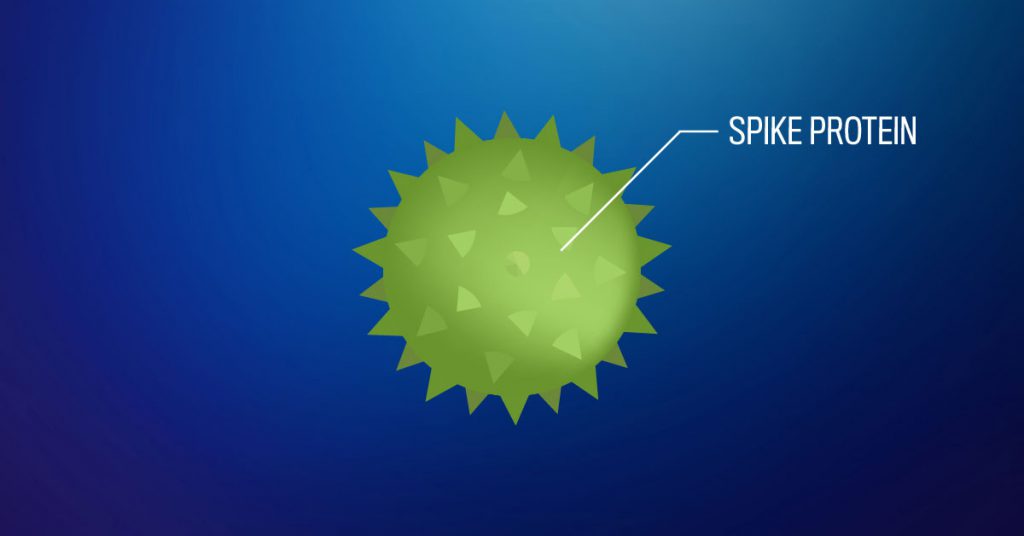A messenger RNA vaccine, also called an mRNA vaccine, is a new kind of vaccine that is the first safe and effective vaccine being used to fight the COVID-19 virus in the United States.
Most often, vaccines put a weakened or inactivated germ into our bodies, leading our immune system to create antibodies that will protect us from the virus if we’re ever infected in the future. The mRNA vaccines available right now (Pfizer and Moderna) do not contain any virus. Instead, these vaccines teach our cells how to make a protein that prompts our immune system to produce antibodies. Like other vaccines, the mRNA vaccine protects us if we’re ever infected with the actual virus.
In our bodies, DNA makes messenger RNA which then make proteins. DNA has all of the information it takes to make you, well, you. Messenger RNA only has the information to make certain proteins. The mRNA vaccines don’t change your DNA or genetic material. And once the vaccine has done its job, the mRNA in the vaccine breaks down. Because mRNA breaks down so quickly, this may decrease the chance of long-term side effects from the vaccine. And because these vaccines don’t contain any virus, there’s no chance for it stay latent in your body and then reactivate years later like the virus that causes shingles can do.
In the case of COVID-19, mRNA vaccines, when injected, give instructions to our cells to make the “spike protein.” The spike protein is a harmless piece of the virus, and in this case it’s found on the surface of the virus that causes COVID-19. When the vaccine is injected, the instructions then tell the cells to make a protein piece. These proteins can’t hurt us; they aren’t part of a replicating and exploding virus that destroys our cells and makes us sick. But the proteins are enough to trick our immune system into building up antibodies to protect us.

The cell then displays the protein piece on its surface. Because this protein isn’t a normal protein found in our bodies, our immune system creates antibodies. Like all vaccines, the end result is protection against a virus without becoming infected.
Think of it like this: our bodies have proteins called ribosomes, which we can think of as 3D printers. When given the right software code or instruction sheet, these 3D printers will print off little robots, which will then travel around our bodies and eliminate the virus. This is what scientists have set out to achieve with mRNA vaccines. Instead of creating a vaccine outside of the body and then injecting it, an instruction sheet for our 3D printers is being injected, prompting our bodies to create their own vaccines.

Although the mRNA vaccine is a new type of vaccine, it already provides several benefits when compared to others. It stimulates both cell-mediated immunity (a type of immune response that is produced by the direct action of immune cells, such as T-cells, rather than by antibodies) and antibody-mediated immunity. In addition to this, no viral particle is present during the process of receiving the vaccine, making it substantially safer than traditional vaccines.
The future for mRNA vaccines is bright. The development of this new vaccine technology brings with it the potential to create more effective vaccines for other viruses like the flu. If another virus comes along, an mRNA vaccine could present a solution.

Until everyone has access to a vaccine, we must continue to wear masks, physical distance, wash our hands frequently, and stay home when we have symptoms of COVID-19 in order to further prevent the spread of COVID-19.
For more information on the COVID-19 vaccine in Utah, visit https://coronavirus.utah.gov/vaccine.
Sources:
- https://www.youtube.com/watch?v=LcTEmHlvY10
- https://www.cdc.gov/coronavirus/2019-ncov/vaccines/different-vaccines/mrna.html
- https://clinicalinfo.hiv.gov/en/glossary/cell-mediated-immunity
- https://www.marketplace.org/shows/marketplace-tech/covid-19-technology-moderna-pfizer-messenger-rna-coronavirus/
- https://dearpandemic.org/

